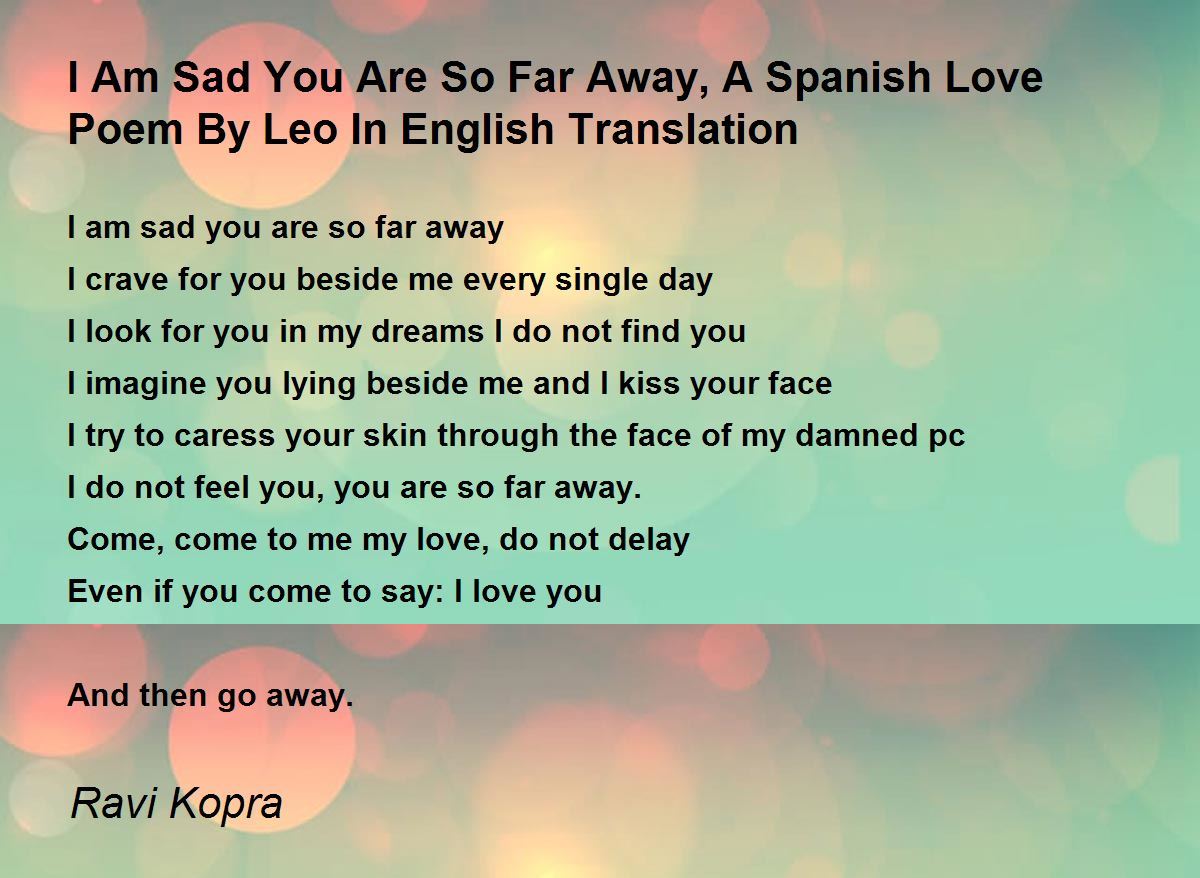Love is in Spanish: Unveiling the nuances and great thing about expressing affection within the Spanish language. From passionate declarations to tender whispers, the way in which we are saying “I really like you” in Spanish reveals a world of cultural context and emotional depth. Put together to be captivated by the artwork of expressing love on this lovely language.
This exploration delves into the assorted methods “love” is expressed in Spanish, contemplating completely different dialects, contexts, and ranges of ritual. We’ll study the most typical phrases, uncover hidden gems, and discover how these expressions replicate the center and soul of Spanish-speaking cultures.
Whereas “love is in spanish” might sound simple, deciphering crossword clues will be surprisingly advanced. For example, discovering the reply to “actress ward” in a crossword puzzle may lead you to discover the fascinating world of actress ward crossword clue. In the end, the nuances of language, whether or not in love or in puzzles, usually require a deeper understanding and a splash of creativity.
Expressing love in Spanish is a wealthy tapestry woven with various phrases, nuances, and cultural contexts. This text delves into the numerous methods to convey affection within the Spanish language, from on a regular basis expressions to extra formal declarations.
Whereas “amor” is the frequent Spanish phrase for love, exploring the nuances of language reveals fascinating connections. Take into consideration the wealthy prospects of four-letter phrases incorporating the letter “y,” like “sorry” or “joyful,” 4 letter words with y. In the end, the depth of expressing love in any language is profoundly compelling.

Past “Te Amo”: Exploring Varied Expressions of Love: Love Is In Spanish
Whereas “Te amo” (I really like you) is undoubtedly the most typical and well known expression, it is simply the tip of the iceberg. Understanding the nuances of Spanish permits for a extra profound and heartfelt communication of affection.
Casual Expressions of Affection, Love is in spanish
On a regular basis interactions usually contain smaller shows of affection. These can vary from easy greetings to extra intimate gestures. Think about these examples:
- Cariño: This interprets on to “darling” or “sweetheart” and is a standard time period of endearment utilized in shut relationships.
- Amor mío: That means “my love,” this phrase is used to specific affection and closeness.
- Mi vida: “My life,” a passionate and intimate expression signifying a profound connection.
- Te quiero: “I would like you” or “I look after you,” a well-liked various to “Te amo,” usually utilized in much less formal settings.
- Te adoro: “I like you,” expressing a deep and passionate admiration.
Formal Expressions of Love
Formal declarations of affection, whereas much less frequent, are additionally necessary to grasp. These are sometimes utilized in written expressions or extra vital moments:
- Te estimo mucho: “I esteem you very a lot,” conveying a excessive regard and respect alongside affection.
- Siento un profundo cariño por ti: “I really feel a deep affection for you,” emphasizing the depth of the emotional connection.
Cultural Context and Variations
The expression of affection in Spanish is influenced by regional and cultural elements. Sure phrases is perhaps extra frequent in a single area than one other, and the tone and context can differ considerably. This context performs an important position in precisely conveying affection.
Whereas “love” is expressed in varied methods throughout languages, together with the passionate nuances of Spanish, understanding the refined linguistic components, just like the silent ‘h’ in sure phrases, can considerably improve comprehension. For example, the silent ‘h’ in phrases like “hora” (hour) or “honor” (honor) usually adjustments the pronunciation and, consequently, the which means. This refined element, as seen in silent h in words , demonstrates the intricate great thing about language and in the end helps us admire the richer context of phrases like “el amor es…” (love is…).

[Image: Map of Spanish-speaking countries highlighting regional variations in expressions of love]
Past Phrases: Nonverbal Communication
Nonverbal cues play a big position in expressing love in any language, together with Spanish. Think about these points:
- Bodily contact: Hugs, kisses, and hand-holding can convey love in a strong manner.
- Eye contact: The best way you have a look at somebody can talk affection and intimacy.
- Tone of voice: The best way you say one thing can drastically change the which means of the phrases, emphasizing the emotional connection.
Selecting the Proper Phrases for the Proper Event
Think about the connection’s nature and the particular scenario when deciding on an expression of affection. An off-the-cuff “Te quiero” is perhaps applicable amongst pals, whereas “Te amo” is extra appropriate for romantic companions. Understanding these nuances ensures efficient communication and avoids misunderstandings.
Sensible Purposes
Understanding these expressions will be useful in varied conditions, from private relationships to skilled interactions. Understanding these nuances can result in larger emotional intelligence.
[Image: Table comparing appropriate expressions of love for different relationships (e.g., family, friends, romantic partners)]
Conclusion and Subsequent Steps
Love is in Spanish is much extra nuanced than a easy translation. Mastering these expressions, each verbal and nonverbal, permits for a extra profound and significant connection. This information enriches communication and permits for larger emotional understanding. [See also: Understanding Latin American Culture and Relationships].
Whereas “love is within the air” is perhaps a common sentiment, expressing that love in Spanish opens an interesting exploration of nuances. Understanding the assorted methods to convey affection in numerous cultures can illuminate the intricacies of human connection. For example, the time period “amor” whereas usually used, can embody a broader spectrum of emotions. This contrasts with the potential complexities of sure phrases when discussing the emotional impression of affection, which might typically be fairly highly effective.
Understanding these nuanced meanings, just like the intricacies behind the ‘p phrase’ – what is the p word – deepens our comprehension of affection’s multifaceted nature. In the end, exploring these subtleties enriches our understanding of the sweetness and energy of affection, even when expressed in numerous languages.
Proceed exploring the intricacies of expressing love in Spanish via additional analysis and sensible utility. Share your experiences and questions within the feedback beneath! Share this text with others who may discover it beneficial.
Understanding how “love is in Spanish” is expressed will be fascinating, however the nuances can typically be misplaced in translation. This may result in misunderstandings, like a “tone deaf city dictionary” definition may supply. In the end, conveying real love, in any language, requires sensitivity and cultural consciousness, simply as mastering the refined shades of “love is in Spanish” does.
In conclusion, the exploration of affection in Spanish reveals a wealthy tapestry of expressions, every carrying a singular cultural and emotional weight. From the passionate fervor of “te amo” to the light tenderness of “te quiero,” the language itself embodies the spectrum of affection. This journey into the center of Spanish-speaking cultures underscores the ability of language to convey profound feelings and cultural nuances.
FAQ Information
What are some frequent methods to say “I really like you” in Spanish?
A number of phrases exist, together with the traditional “te amo,” which interprets to “I really like you” in a romantic context. “Te quiero” expresses a extra basic affection, whereas “te adoro” signifies deep admiration and adoration. Your best option relies on the connection and the particular nuance you wish to convey.
How does the context affect the selection of phrase?
The formality of the scenario, the character of the connection, and the general tone of the dialog play a big position in deciding on the suitable phrase. An off-the-cuff setting may name for “te quiero,” whereas a extra formal event may warrant “te amo.”
Are there regional variations in how love is expressed in Spanish?
Sure, regional variations exist. Whereas “te amo” is extensively understood, nuances in tone and utilization may differ throughout varied Spanish-speaking international locations. Additional analysis into particular dialects can reveal these variations.
What are some much less frequent however lovely methods to specific love in Spanish?
Past the frequent phrases, exploring poetry, songs, and literature can uncover a plethora of lovely and nuanced methods to specific love in Spanish. These usually seize the essence of the language’s wealthy cultural heritage and the ability of phrases to specific deep feelings.
